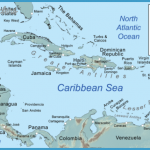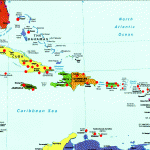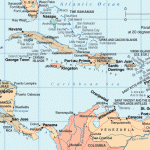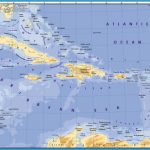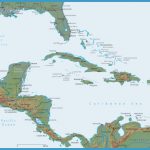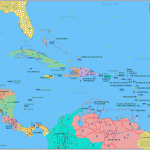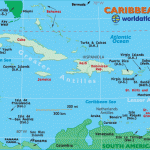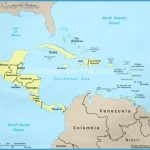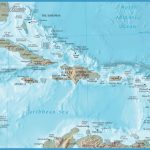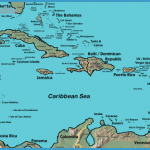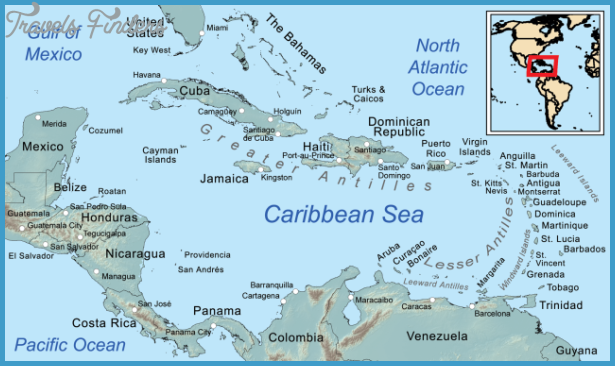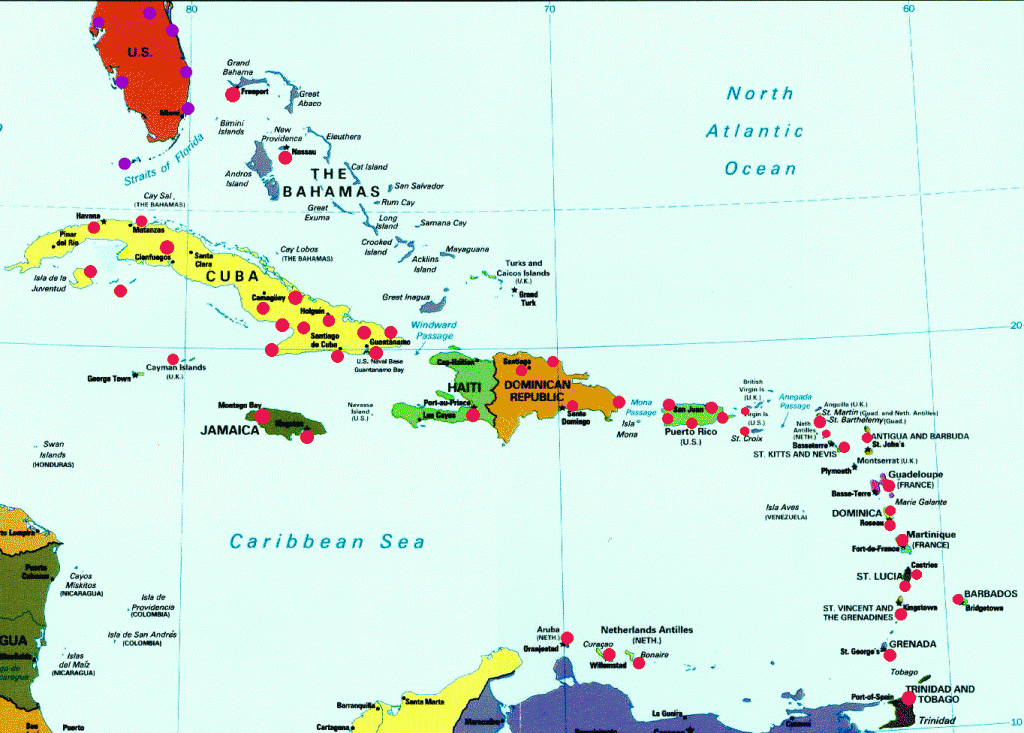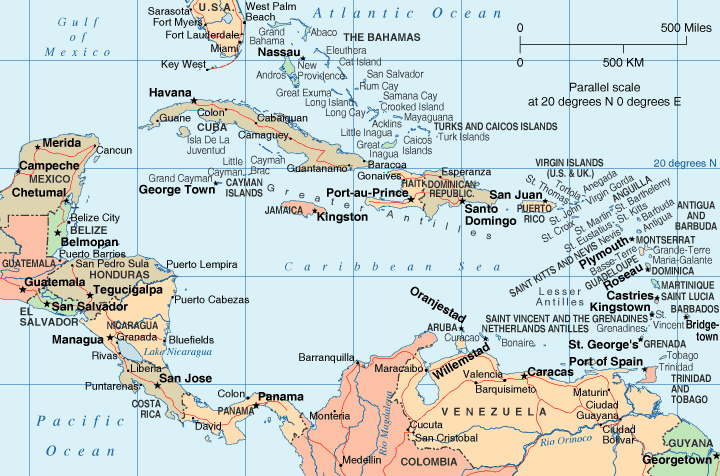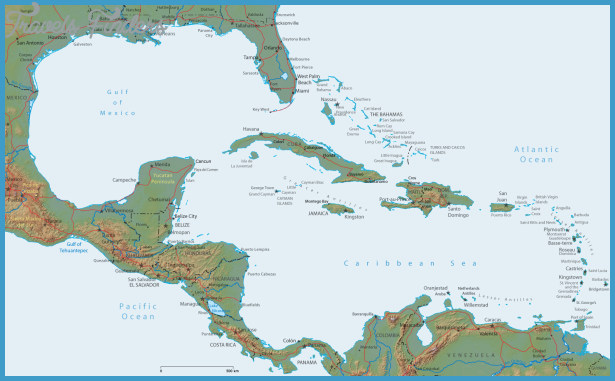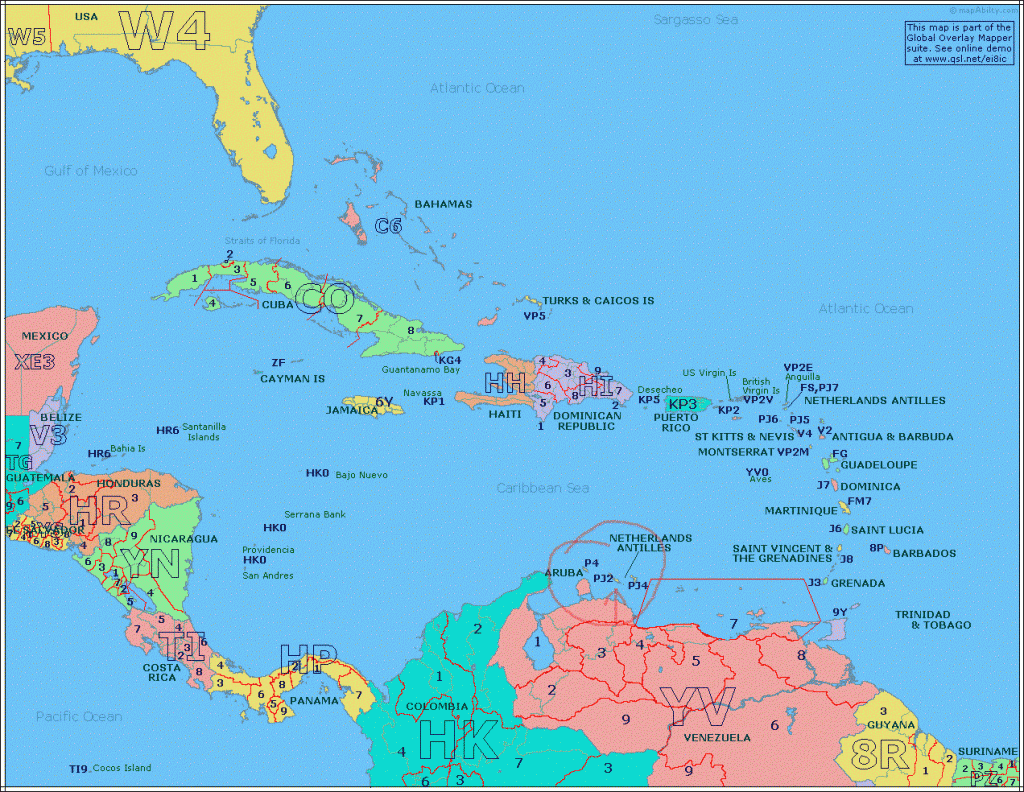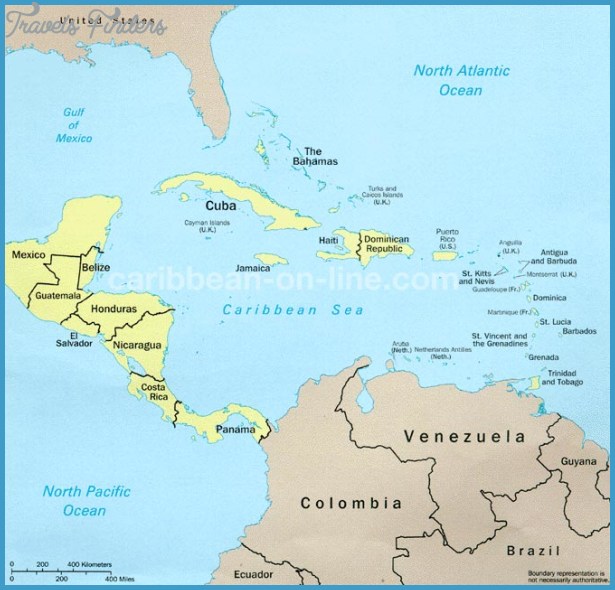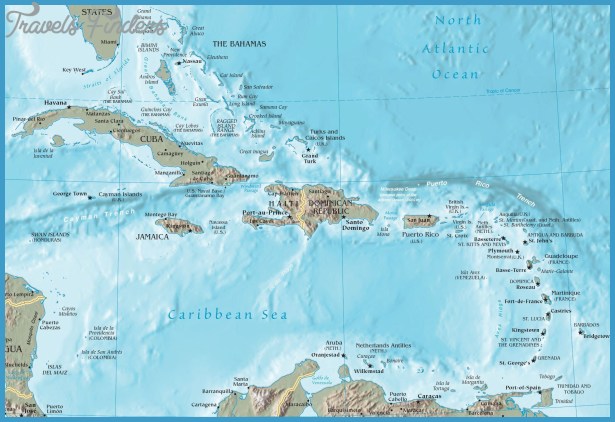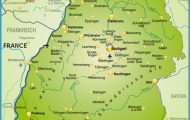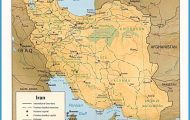HISTORICAL IMPACT ON THE CARIBBEAN
Geographically and climatically, the Caribbean ties together; politically, culturally and economically, the Caribbean is more collage than community. The area is most notably divided between the British Commonwealth states and territories and those which are historically Hispanic, French, or Dutch. In much of the area, the Black/White syndrome, with its roots in slavery, permeates and complicates the differences. Three-fourths of the Caribbean people are at least partially descended from African slaves. The other quarter includes direct descendents of European colonists and East Indians and Chinese who came as indentured laborers after slavery was abolished in the nineteenth century. Economics, historical and current, serve to further differentiate cultures within the area. In 1961, there were only three independent Caribbean countries Cuba, Haiti, and the Dominican Republic. Together they contained three-fourths of the Caribbean population. In 1980, ten were independent.
The Caribbean is thought of as a tropical sea with typical flora, mood, and sea breezes. The tradewind blows constantly over most of the area. Sugar, coconuts, bananas, political instability, languor, passion, and poverty create the image.
FIGURE 7.4 Codes for cities bordering on the Caribbean and Gulf of Mexico.
ANU Antigua, West Indies
BDA Bermuda
CCS Caracas, Venezuela
FDF Fort de France, Martinique
GUA Guatemala City, Guatemala
IAH Houston, Texas USA
KIN Kingston, Jamaica
MBJ Montego Bay, Jamaica
MEX Mexico City, Mexico
MGA Managua, Nicaragua
MIA Miami, Florida, USA
MID Merida, Mexico
MSY New Orleans, Louisiana, USA
NAS Nassau, Bahamas
PAP Port-au-Prince, Haiti
POS Port of Spain, Trinidad
PTP Pointe-a-Pitre, Guadeloupe
PTY Panama City, Panama
SAL San Salvador, El Salvador
SAP San Pedro Sula, Honduras
SDQ Santo Domingo, Dominican Republic
SJO San Jose, Costa Rica
SJU San Juan, Puerto Rico
STT St. Thomas, Virgin Islands
STX St. Croix, Virgin Islands
TIJ Tijuana, Mexico
TPA Tampa, Florida, USA
As a tourist attraction, the area is seen as all of a piece, a view which is only partly valid. White sandy beaches, warm ocean water, the opportunity to swim and sail are major appeals. For North Americans, the Caribbean projects palm trees waving in balmy breezes, the limbo dance, straw markets, and new hotels set in scenic beauty. More recently, the Caribbean has become a tropical sea cruised by sleek vessels manned with foreign crews, providing groaning tables and continuous entertainment with a series of one- or two-day stopovers at exotic islands with freeport prices.

